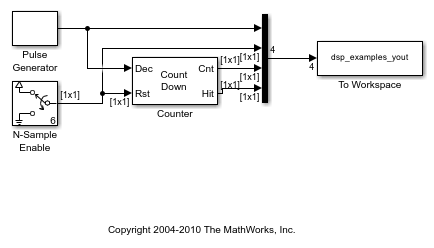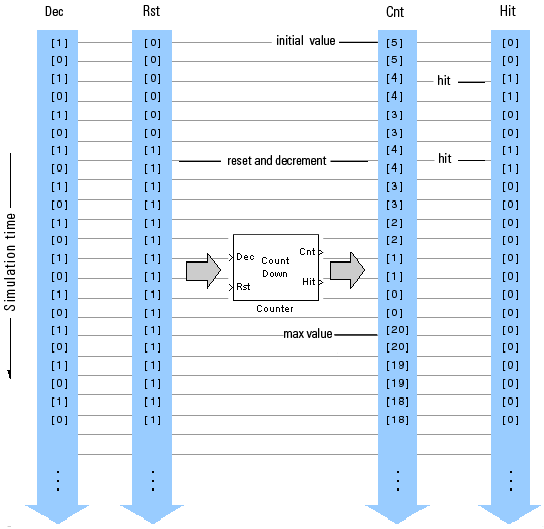N-Sample Enable
Output ones or zeros for specified number of sample times
Libraries:
DSP System Toolbox /
Sources
DSP System Toolbox /
Signal Management /
Switches and Counters
Description
The N-Sample Enable block outputs the inactive value
(0 or 1, whichever is not selected in the
Active level parameter) during the first N
sample times, where N is the Trigger count
value. Beginning with output sample N+1, the block outputs the active
value (1 or 0, whichever you select in the
Active level parameter) until a reset event occurs or the
simulation terminates.
The output of the block is always a scalar.
The Reset input check box enables the Rst input port. At any time during the count, a trigger event at the input port resets the counter to its initial state. You specify the type of trigger event using the Trigger type parameter. This block supports triggered subsystems when you select the Reset input check box.
Examples
Ports
Input
Output
Parameters
Block Characteristics
Data Types |
|
Direct Feedthrough |
|
Multidimensional Signals |
|
Variable-Size Signals |
|
Zero-Crossing Detection |
|
Extended Capabilities
Version History
Introduced before R2006a



